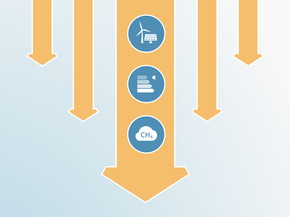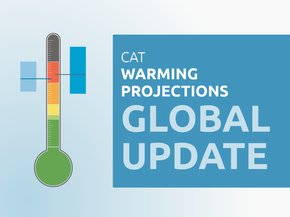Assumptions
Note: We have updated the text assessment to reflect the latest policy developments in Costa Rica. The CAT’s ratings and data are from our 2023 evaluation and will be updated soon.
Historical emissions
Historical emissions for the years 1990–2017 were taken from the latest UNFCCC inventory (Government of Costa Rica, 2021), and extrapolated gas by gas to 2021 using data from PRIMAP (Gütschow and Pflüger, 2022).
NDC and other targets
Costa Rica’s NDC states a target to keep emissions below 9.11 MtCO2e by 2030, including LULUCF. Costa Rica’s NDC target is expressed in SAR GWPs.
The CAT presents all targets excluding LULUCF and with global warming potentials (GWPs) from the IPCC’s fourth assessment report (AR4). We used a conversion factor based on the latest national inventory historical data available (Government of Costa Rica, 2021) to convert Costa Rica’s target to AR4. Taking the last available single year data (2017), we calculate a conversion factor by dividing Costa Rica’s 2017 emissions expressed in SAR by the emissions for the same year expressed in AR4 GWPs. We apply this conversion factor to Costa Rica’s emissions targets to convert them to AR4, assuming that the split of different GHGs remains unchanged between 2017 and 2030.
The CAT excludes LULUCF from the target quantification (see CAT methodology). To account for the uncertainty regarding LULUCF emissions, we assumed a LULUCF emissions range to calculate the value of the NDC target excluding LULUCF. The upper end of the range corresponds with LULUCF projections included in the BUR2 WAM scenario, and the lower end corresponds to LULUCF projections in the National Decarbonisation Plan, which is the base for the lower end of current policy projections. We assume these two different ends of the range as there is uncertainty about LULUCF emissions. Efforts—including a REDD+ strategy—exist to reduce emissions in the LULUCF sector. Nevertheless, a national study (Sancho, Rivera and Obando, 2015), which estimates emissions from LULUCF by examining the forest compositions and historical trends, projects that the LULUCF sinks will start to shrink after 2029 and emissions from this sector will become positive in 2050.
Current policy projections
The upper end of our current policy projections is based on the Conservative baseline scenario from the 2st Biennial Update Report (BUR) (Ministerio de Ambiente y Energía, 2015a) and national estimates of Law 9518 from 2018 on transport electrification (Government of Costa Rica, 2019e). The Conservative baseline scenario from the 2st BUR includes only actions or projects at a sector or economy wide level that are already implemented or which have received a first investment that makes them irreversible as of 2019 (Ministerio de Ambiente y Energía, 2019).
The lower end of current policy projections is based on the 1.5° pathway of Costa Rica’s National Decarbonisation Plan 2018–2050 (Government of Costa Rica, 2019c), which is almost completely on track according to the latest update report (Direccion de Cambio Climatico, 2021c). In previous CAT assessments, this scenario was included under planned and not current policy projections because it was not yet clear whether Costa Rica was on track or already implementing some of its key measures. For example, Costa Rica’s transport sector policies, which are potentially the most impactful policies within the National Decarbonisation Plans in terms of reducing emissions, were previously marked as “on hold” in Costa Rica’s Second Biennial Update Report of 2019 (Ministerio de Ambiente y Energía, 2019), but are now marked as being implemented in the latest NDP update report (Direccion de Cambio Climatico, 2021c). As of 2023, we consider Costa Rica’s National Decarbonisation Plan as being fully in its implementation phase and therefore included in our current policy projections.
Net-zero target and other long-term targets
Costa Rica has committed to being net-zero by 2050. Its long-term strategy (LTS) does not include an explicit target on removals but includes an estimate of sectoral emissions in 2050 in a 1.5°- and 2°-compatible scenario. To account for any uncertainty regarding LULUCF emissions in 2050, we assumed an emissions range to calculate Costa Rica’s GHG emissions in 2050 excluding LULUCF. The upper end of the range corresponds to LULUCF projections included in the BUR2 WAM scenario, and the lower end corresponds to the 1.5°-scenario emissions projections presented in the National Decarbonisation Plan. Thus, we estimate Costa Rica’s total GHG emissions in 2050 excl. LULUCF to be between 2.9 and 5.5 MtCO2e.
The top end of the range is used in our standard pledges and targets pathway, while the bottom end is used in the Optimistic pathway.
Global Warming Potentials values
The CAT uses Global Warming Potential (GWP) values from the IPCC's Fourth Assessment Report (AR4) for all its figures and time series. Assessments completed prior to December 2018 (COP24) used GWP values from the Second Assessment Report (SAR).
Further analysis
Latest publications
Stay informed
Subscribe to our newsletter




